
First and Only Weekly Online Fanzine Devoted to the Life & Works of Edgar Rice Burroughs
Since 1996 ~ Over 15,000 Web Pages in Archive
presents
Volume 2316

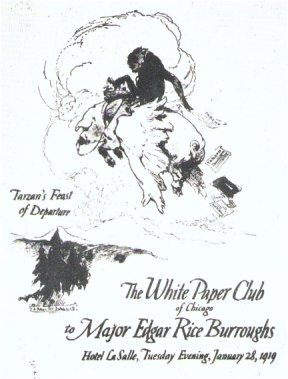 |
If Pigs Had Wings: Edgar Rice Burroughs'
|
During the years 1911 to 1919 ERB visited Southern California three times, once in 1913, again in 1916 and his final visit in 1919 when he established himself there. The question is why, what motivation did he have for those visits.After 1911 life began to move very fast for ERB in dizzying leaps of change while all the time his mind disgorged a lifetime's worth of stories based on his reading and experience from 1875 to 1911.
One of the most important influences of this early period was the OZ books of L. Frank Baum. The whole Mars series of Burroughs can be seen as the transportation of OZ to Mars as filtered through Burroughs' mind. John Carter can easily be seen as the Wizard while Dejah Thoris is perhaps Ozma rather than Dorothy.
Baum while not a native Chicagoan lived in that city at least through the nineties. In 1900 he began to turn out his OZ stories that so impressed ERB. Then he moved to San Diego, California which city he left for Hollywood in 1910. At that time Hollywood was just a town on the outskirts of LA. The movies didnít arrive until 1914 so the films had no bearing on Baum's choice to live there or ERB's visit. I believe that one purpose of ERB's visit was to present himself to Baum with his own stories as an entree. There is hard evidence that at this time ERB made a trip to LA to see Baum and I believe it certain that he did.
Now, it is debated whether Burroughs ever had any interest in Theosophy. David Adams, so far as I know was the first to suggest he did. Once again we're on thin ice in saying that he learned something of it most likely during this visit but the ice isn't all that thin.
Baum himself had been a card carrying Theosophist since about 1883, his mother-in-law much longer. Tthere are those who argue that the OZ stories are virtual treatises on Theosophy. They make a good case. It follows then that Burroughs must have imbibed a good deal of Theosophical talk from Baum, including discussion on Madame Blavatsky if not beginning in 1913 then at least in 1916 when we do have a record of his visiting Baum.
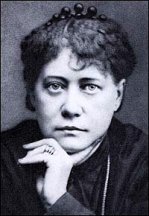
Madame Blavatsky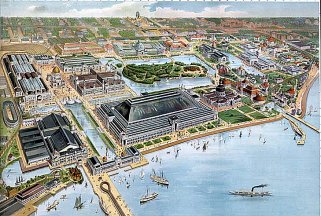
Chicago Columbian Exposition 1893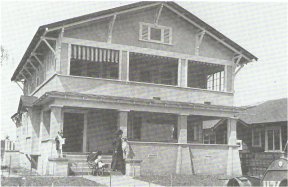
550 A Avenue, Coronado, California
In San Diego in 1913 ERB first stayed in Coronado across the Bay from San Diego. Across the narrows from North Island just above Coronado is Point Loma. The Point Loma Theosophical Society under the guidance of Katherine Tingley had a spectacular campus reminiscent of the Columbian Exposition of '93 in miniature. Tingley built the first Greek Theater in America there. I should think it impossible that ERB and Emma didn't visit the campus at least once. With ERB's curiosity in religion I think it probable that he spent some time there familiarizing himself with their texts in emulation of his own hero, Baum.Also by 1913 Max Heindel's Rosicrucian Society had been in operation for several years in Oceanside just a skip from Point Loma. I can make no claims that ERB also took Rosicrucianism in but a man of his interests may easily have done so.
Baum was one reason for Burroughs to visit San Diego in 1913 which was also his earliest opportunity.
ERB's mental turmoil in dealing with success was exacerbated in the first quarter of the year by the death of his father. I'm sure this event had a terrific impact on ERB. His was a difficult relationship with his father. While ERB regretted his father's death I suspect he rejoiced in it too.
According to Herb Weston, George T., the father, humiliated his son by publicly declaring that he was worthless. Thus on the one hand ERB created an ideal father figure in John Carter, but way off on Mars. He also created an evil father figure in the deaf and dumb looney who tortured the Lad of Lad And The Lion. that book was written over March and April of 1914 almost exactly a year after his fatherís death.
Perhaps his father's death caused a reaction where he had to get far away from the memory of that hateful father. After writing The Lad And The Lion on the anniversary of his father's death, as it were, he was able to return to Chicago.
Another reason for his leaving for San Diego may have been the need to rectify and reverse the disastrous trip with Emma to Idaho in 1903. In that instance they packed their furniture and all their belongings to go West. The trip to Idaho may have been in emulation of Owen Wister's Virginian in which the Virginian and his wife lead an idyllic existence away out there. The experiment ended in disaster a year later when after serving as a railroad dick in Salt Lake City while trying to run a boarding house the couple was forced to sell their belongings at auction although returning to Chicago first class.
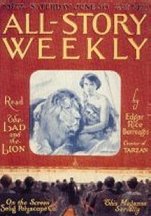
The Lad and the Lion |
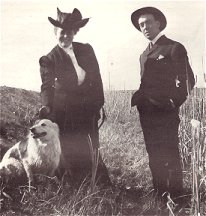
In Idaho with collie dog, Rajah |
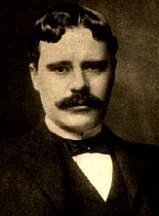
Owen Wister |
The failure nearly disrupted the marriage while apparently causing ERB no end of personal grief. As he did in his stories ERB believed that by reversing the results by a subsequent action he erased the actual occurrence of the first. Thus in 1913 once again the family now of five packed all their belongings including their second hand car and traveled first class to Los Angeles as the only rail service into San Diego was from LA. It should be noted here that the IWW or Wobblies invaded San Diego in 1913 so ERB was probably present at that debacle which is worth reading about.After some months in San Diego the couple once again sold all their belongings including the second hand car before returning to Chicago. This time ERB could return in comfort knowing that he was solvent in Chicago. On his return he bought the same car, a Hudson, that his hero Baum drove.
Still, a very strange interlude.
Once back in Chicago (Oak Park) ERB remained there in what sounds like one the finer houses of the city for two years until 1916 when he returned a second time to San Diego.
Tremendous events occurred between his arrival back in Chicago and his second departure for San Diego. Of course, the Great War broke out shortly after his return. I donít mean to say that the war didnít overshadow everything else but I donít think it over shadowed everything else in ERB's mind.
There were at least two other events of signal importance for Burroughs not including the Jack Johnson Affair. These were busy times. The first was the creation of the Panama Canal that was completed in 1913, opened in 1914. The canal overwhelmed ERB's mind. A few years later he and Emma would voyage through the canal, the only trip outside the US with Emma of which we have knowledge.
The second was the announcement of the construction of the Lincoln Highway from NYC to San Francisco. The highway was dedicated in 1913, but would not become a reality until long after ERB decided to make the trip in 1916.
In 1912 there were almost no good roads to speak of in the United States. The relatively few miles of improved roads were around towns and cities. A road was "improved" if it was graded; one was lucky to have gravel or brick. Asphalt and concrete were yet to come. Most of the 2.5 million miles of road were just dirt, bumpy and dusty in dry weather, impassible in wet weather. Worse yet, the roads didn't really lead anywhere. They spread out aimlessly from the center of the settlement. To get from one settlement to another, it was much easier to take the train.
According to the Association's 1916 Official Road Guide a trip from the Atlantic to the Pacific on the Lincoln Highway was "something of a sporting proposition" and might take 20 to 30 days. To make it in 30 days the motorist would need to average 18 miles an hour for 6 hours per day, and driving was only done in daylight hours. the trip was thought to cost no more than $5 a day per person, including food, gas, oil, and even "five or six meals in htoels." Car repairs would of course, increase the costs.
Since gasoline stations were still rare in many parts of the country, motorists were urged to top off their gasoline at every opportunity, even if they had done so recently. Motorists should wade through water before driving through to verify the depth.
So ERB's little caravan seems to have been a wise precaution. J.C. Furnas in his book Great Times says that 60 days for the trip was a more likely figure so ERB wasn't too out of line in what seems like an overlong journey. Furnas born in 1906 probably remembers something of the hoopla first hand. He remembers the route terminating in San Diego which was where ERB ended up at any rate.
The trip was obviously a first rate adventure for which ERB was prepared but which he didn't care to repeat. Of course his children who were free of cares enjoyed things immensely.
An object influencing ERB's decision to make the trip was the Panama-Pacific Exhibition in San Diego in 1916. The opening of the Panama Canal benefited California directly. The route whether from the East Coast or Europe was shortened immensely. Thus both San Francisco and San Diego had exhibitions. The one in San Francisco ended in 1915 so many of those exhibits shifted to San Diego. One can't expect the San Diego Expo to rival that of the great Columbian Expo of 1893 but I suppose it was still something. There was one exhibit that probably had a profound effect on ERBís future. Furnas, Great Times, p. 186:
The also highly California purpose of the whole doings was candidly to promote settlement and land sales in this relatively undeveloped corner, as the most original feature was what the advertising called ďmoving, throbbing, real lifeĒ demonstrations. That instead of just showing the latest farm machinery in an Agricultural Hall, here was an impressively extensive model farm with the machines actually out there plowing, cultivating, ditching. For the other kind of farmer, here was a model five acres to show what irrigations could do to intensive cultivation-orchards of walnuts and four different fruits with all kinds of garden truck flourishing between the rows of trees and a model farm family inhabiting a model California bungalow with such fancy modern gadgets as an automatic electric pump and a vacuum cleaner.Sounds like it might have given ERB ideas that came to fruition three years later.We know for sure that ERB made the trip in 1916 to Hollywood to visit L. Frank Baum. Baum called his residence Ozcot after his famous wonderland. Iím sure ERB was very impressed so that it comes as little surprise that he named the estate he bought in 1919 Tarzana.
A question I would dearly like answered is did ERB make a trip to San Francisco in either 1913 or 1916? San Francisco appears in a few novels from The Mucker to Marcia Of The Doorstep always with negative connotations. It would be nice to know what if anything happened to sour ERB on Baghdad By The Bay. It will be remembered that Billy Byrne was shanghaied from San Francisco in 1913's The Mucker when ERB was already in California.
At any rate the family returned to Chicago to spend a year or two before they made the final move to California in 1919. In 1917 the US entered the war. ERB had earlier tried to enter the fray as a war correspondent but was refused. Now he found a place in the Illinois National Guard as a Major. He stands so proudly in his uniform, an officer finally after all those years.
The war brought out an aspect of his character that may have caused him harm hastening his departure from Chicago.
ERB was acutely aware of having a split personality or, as he put it being two different people a la Jekyll and Hyde. While one finds a reflection of a deep thinking man in his novels many of his actions reveal a very gauche side to his character. I have read very few of his public pronouncements that show him in a truly positive light.
The writing of his anti-German story "The Little Door" which was presented with little approval from his publishers being rejected by all. The amazingly prescient Beyond Thirty was also coldly received. Even his published writing found tough sledding from time to time. It seems that both Metcalf and Bob Davis of Munsey's had mixed feelings about him. The manner in which Davis writes to him I find fairly insulting. Of course, as time went on publishers wanted only Tarzan stories from him accepting anything else only grudgingly or even, in two notable cases rejecting the stories outright. Nor was ERB ever accepted by the Chicago literary establishment. Chicago in the teens had a vibrant literary scene to which ERB rightfully belonged yet the only literary club he was able to join was the White Paper Club that any scribbler or wannabe could join. There was something in the character of ERB that obviously put people off.
Porges, in discussing ERB's wartime activities is openly ambivalent about this. Porges describes some of his actions as 'interperate.' Something I wish he hadn't done at the this period that I think was inconsiderate was, as Porges says, p. 288:
In this and other articles Ed revealed how he had been influenced by the wave of public suspicion directed at German-Americans. He admitted that his methods for selling Liberty Bonds may not have been ethical: ďWe went out in selected groups decked out in all the panoply of war and armed with a bunch of yellow cards each of which bore the name of some suspected German sympathizerÖ He endorsed this as a way to ďspear a Hun right here at home.Ē (Italics mine)Only suspected. That's something I wish a hero of mine hadnít done. While no one probably said anything to him in wartime I suspect there were repercussions after the Armistice. Many people who hadnít before probably looked at him askance. His wartime actions were too at variance with his more thoughtful writings. Of course, so far Iím about the only critic who perceives the deep reflection in his stories. Most people then probably thought his novels were pure balderdash. Still he was a best selling author whose main creation had become a household word within six years or less and has since become one of the best known literary characters in the world.Nevertheless not too long after the Armistice ERB upped stakes making his third and final trip West. His send off by his Chicago clubmates at the White Paper Club was less than sterling to my mind. The cover of the menu showed a pig with wings flying West.
This was ostensibly in reference to his statement that he was going West to be a hog farmer. Still the phrase 'when pigs have wings' is usually a negative reference. I can't escape the notion that there was an element of 'good riddance' in his farewell party.
Regardless of how ambiguous his position in Chicago had been he left the Chicago phase of his career behind in January of 1919. It was a new world in the morning when he arrived in LA. But strangely it soon took a Chicago turn. Tarzana awaited him.

Web Refs in ERBzine
Edgar Rice Burroughs Bio Timeline
Baum, Burroughs, and the Theosophy Connection
ERB & LFB: Wizards of California
The Wizards of California: Baum & Burroughs
David Adams' Nkima "Chats" Columns
Columbian Exposition
John Carter: Sword of Theosophy Revisited
The Gods of ERB: Reason vs. Superstition
George T. Burroughs Biography
Joan Burroughs Pierce Biography
Sweetser / Burroughs Idaho Connection
ERB Personal Library
The Homes of ERB
Oak Park Man Honored: ERB in the Militia
The Mucker (eText)
The Mucker: ERB C.H.A.S.E.R. Encyclopedia Entry
Lad And The Lion
Beyond Thirty
"The Little Door"
The Affair Jack Johnson
TarzanaExternal Links
Lincoln Highway from NYC to San Francisco
Lincoln Highway Wikipedia Entry
|
and Follow the Navigation Chart for the Entire Series of Articles |
|
Differing viewpoints are welcome. |
|
are not necessarily those held by Edgar Rice Burroughs, Inc. |
![]()
Our
Armada of ERB Web Sites
![]()
![]()
![]()
![]()

![]()
BILL
HILLMAN
Visit
our thousands of other sites at:
BILL
and SUE-ON HILLMAN ECLECTIC STUDIO
ERB
Text, ERB Images and Tarzan® are ©Edgar Rice Burroughs, Inc.-
All Rights Reserved.
All
Original Work ©1996-2009/2018 by Bill Hillman and/or Contributing
Authors/Owners
No
part of this web site may be reproduced without permission from the respective
owners.